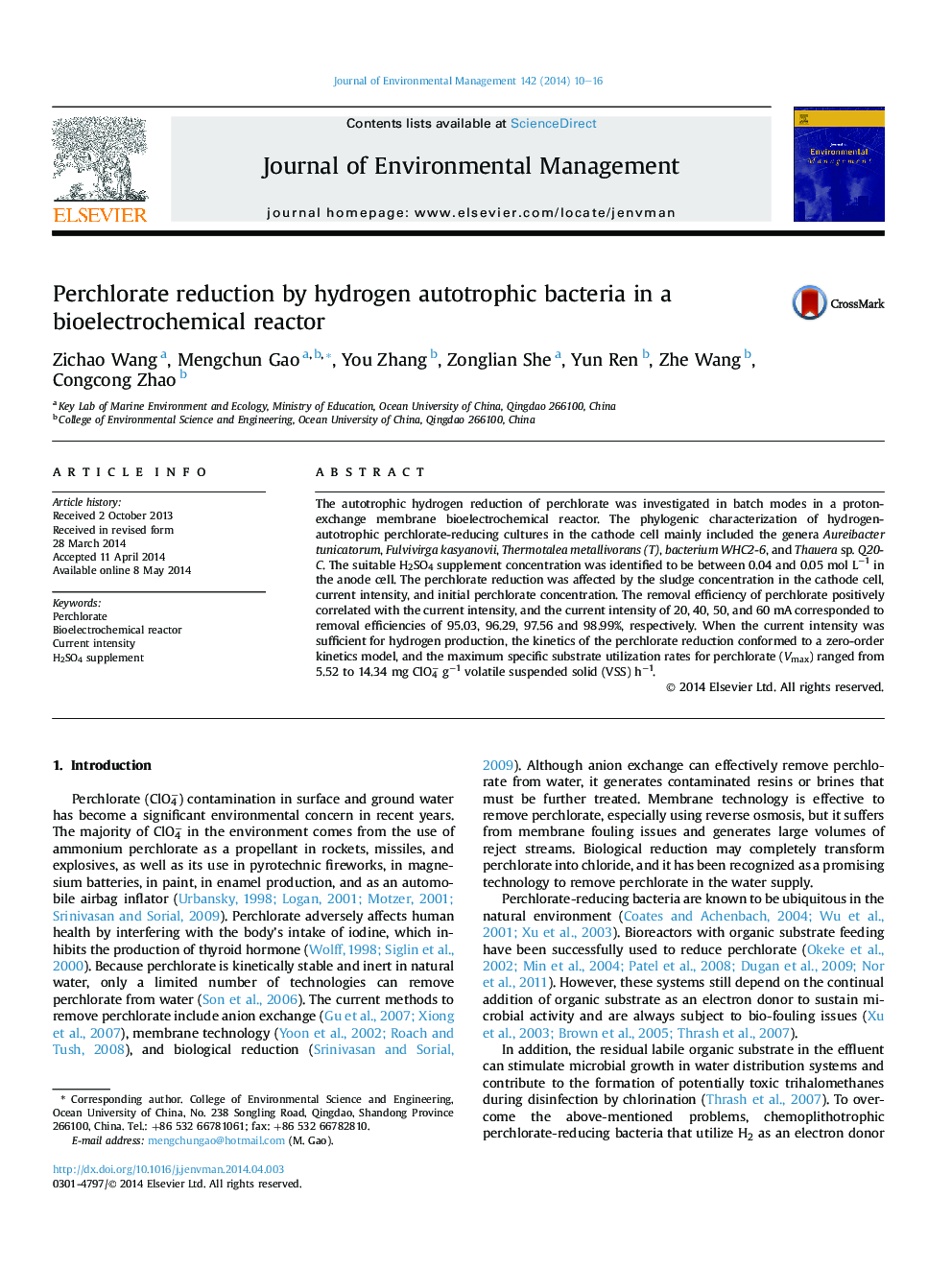| Article ID | Journal | Published Year | Pages | File Type |
|---|---|---|---|---|
| 1055866 | Journal of Environmental Management | 2014 | 7 Pages |
•We reported a bioelectrochemical system for perchlorate reduction.•The suitable H2SO4 supplement concentration was optimized in cathode cell.•The hydrogen autotrophic perchlorate-reducing culture was acclimatized.•The kinetics of perchlorate reduction was determined.
The autotrophic hydrogen reduction of perchlorate was investigated in batch modes in a proton-exchange membrane bioelectrochemical reactor. The phylogenic characterization of hydrogen-autotrophic perchlorate-reducing cultures in the cathode cell mainly included the genera Aureibacter tunicatorum, Fulvivirga kasyanovii, Thermotalea metallivorans (T), bacterium WHC2-6, and Thauera sp. Q20-C. The suitable H2SO4 supplement concentration was identified to be between 0.04 and 0.05 mol L−1 in the anode cell. The perchlorate reduction was affected by the sludge concentration in the cathode cell, current intensity, and initial perchlorate concentration. The removal efficiency of perchlorate positively correlated with the current intensity, and the current intensity of 20, 40, 50, and 60 mA corresponded to removal efficiencies of 95.03, 96.29, 97.56 and 98.99%, respectively. When the current intensity was sufficient for hydrogen production, the kinetics of the perchlorate reduction conformed to a zero-order kinetics model, and the maximum specific substrate utilization rates for perchlorate (Vmax) ranged from 5.52 to 14.34 mg ClO4− g−1 volatile suspended solid (VSS) h−1.
